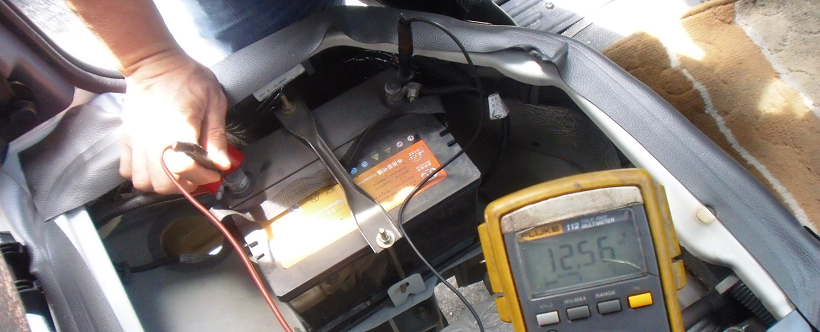Let's set the scene. You get into your car, eager to set off to your destination. You turn the key, but nothing much happens. At that point, you decide to try again, thinking you didn't turn the key as much as you should have done Now you realize that you have car starting problems.
But, there's still no response. By now, you come to the realization that you aren't going anywhere in your car today! You will also have to get the bus or pay for a taxi to get to your destination.
When you get back home later, you start to wonder why your car isn't starting. A quick Google search on your smartphone reveals all kinds of causes! What should you do? Well, in these situations, it comes down to a process of elimination. Here's how to diagnose why your car won't start:
Check your battery
The majority of starting issues come down to a problem with the battery. After all: this is what provides your car with the electricity it needs to turn the engine over!
First of all, you need to check if you've got a flat battery. You can do this with a cheap multimeter. Make sure you've plugged the black lead on the multimeter into the COM port. The red one should go into the "V" port. Set your multimeter to 20v DC and put the black lead on the negative battery terminal. Next, put the red lead on the positive one.
A reading of 12.6v or more means you've got a 100% charge. If the multimeter tells you the reading is 10.5v or less, you've got a flat battery. Anything under 12.06v means you've got less than 50% charge.
If your battery charge is low, it won't have enough power to energize the starter motor. Either charge the battery with something like an Optimate charger or fit a brand new one.
Another thing you should check is the condition of the battery terminals. You should clean them up with a wire brush to remove any surface corrosion and dirt. Dirty terminals or connectors to the battery can also cause no-start problems.
Does your car have a slipped timing belt or damaged valves?
You might have noticed a loss of power when driving the car last. Warning lights may have illuminated on your dashboard. If that's the case, you may have caused severe damage to your engine!
In those scenarios, it's often more cost-effective just to buy another car. The cost of repairing internal damage to an engine can often cost more than the vehicle's value!
The easiest thing to do is to sell your car for spares or repairs and buy another one from Hilton Garage. That way you can get up and running again fast. It might sound like a drastic action to take, but it's the only cost-effective way to drive again in such cases.
Check your starter motor wiring
If the battery is fine, you need to ensure the wiring between the battery and the starter motor is fine. Sometimes loose or worn wires can cause no-start scenarios.
Check your ground leads
Your car's engine bay will have a few ground or "Earth" leads. One prominent example is the one that goes from your negative battery terminal to the body of your car. If any of those leads look worn or corroded, clean them up or replace them.
Check your starter motor
Let's say you know your engine hasn't got damaged and you know fuel and air are going into the combustion chamber. The last thing you should check is the starter motor itself.
You'll usually have to remove some engine parts like the inlet or exhaust manifold to reach it. Assuming you've got the right tools to hand, unbolt the starter motor from the engine.
Clamp it in place in a vice and using a charged 12v battery, test the operation of the gears, and solenoid. If either fails to work, you'll need to repair or replace your starter motor.
Good luck!




Share with us what you think about this topic to provide another reader more information that this article should have covered.